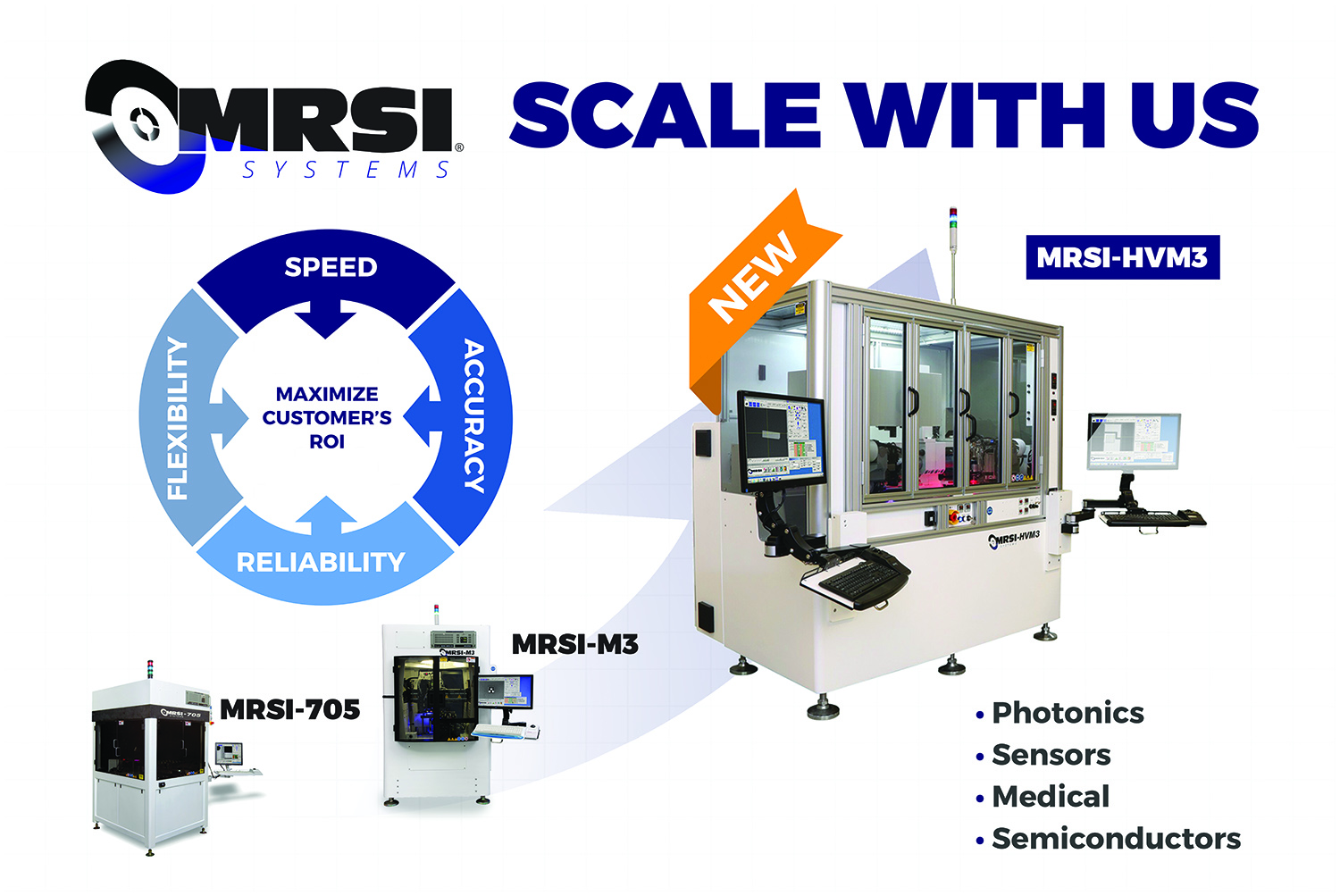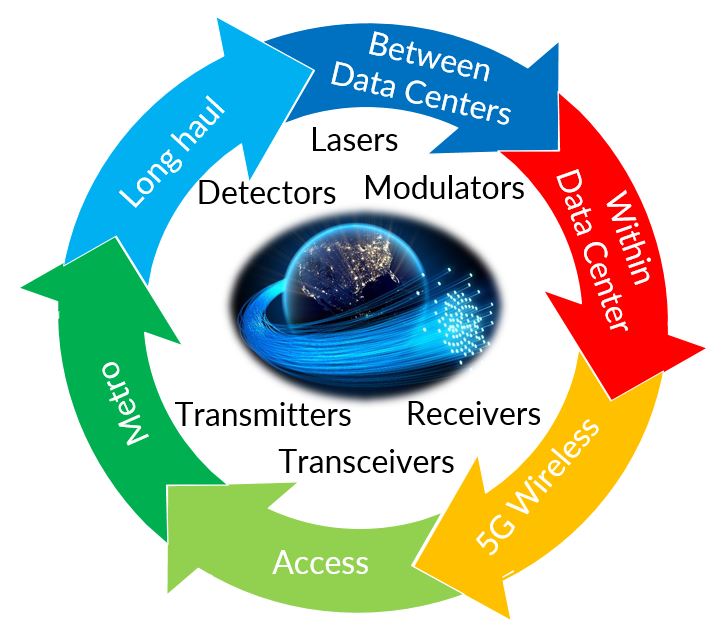WEBINAR

MRSI Systems – IEEE Tech Insider Webinar:
The Challenges in High Volume Manufacturing of Photonic Devices for Data Center Applications
Please Complete the Form Below to Watch the Webinar Recording
These requirements have posed significant challenges to photonic device manufacturing. To support data center build-up, the photonic device companies need to maintain an “elastic capacity model” to respond fast to data center customer’s demands, and at the same time to maintain low manufacturing costs to produce profits. This calls for much higher levels of manufacturing automation than the photonic industry has ever experienced. In addition, the co-existence of many product standards requires that manufacturing automation is flexible to allow multiple products, e.g., single die Fabry-Perot (FP) laser submount and multiple die electro-absorption laser (EML) submount assembly, to go through the same production lines without sacrificing throughput. Furthermore, more and more advanced technologies demand higher and higher precision in assembly automations, again without sacrificing speed and throughput. High speed, high precision, and high flexibility for the high volume manufacturing of photonic devices require closer collaboration than ever between device designers, process developers, manufacturing engineers, and automation equipment suppliers. This webinar will discuss these trends, challenges, and opportunities.


Photonics is Essential for Bandwidth Growth

Dr. Qian joined MRSI Systems in 2015 to help develop the company’s market strategy and product roadmaps, drive the development of new products, and diversify MRSI product offerings to target higher growth market segments. He has over 20 years of experience in large corporations and small start-up companies, developing and marketing advanced optoelectronic and mechanical components and systems with integrated hardware and software, for fiber optics / photonics, sensors, medical devices and other industries.
Prior to MRSI Systems he was Director of Product Management and Marketing at Cambridge Technology, a Novanta company, delivering high performance laser scanners for multiple industries. Before that, Dr. Qian worked at Oclaro as Director of Product Management for 40G/100G optical transceivers and line cards. He was Vice President of Engineering in Dimensional Photonics International, a 3D laser sensor system startup that was acquired by Danaher Dental. Prior to that he was Director of Engineering making high speed and high power semiconductor laser diodes and modules in Corning’s Lasertron division. He started his career in industry at Lasertron Inc before Corning’s acquisition.
Dr. Qian received a Bachelor’s Degree in Electrical Engineering from Zhejiang University and a Ph.D. Degree in Physics from Institute of Semiconductors, Chinese Academy of Sciences. He was also a postdoctoral researcher at Cornell University focusing on wafer-bonded long wavelength VCSELs, new compliant substrate structures and materials, and advanced nanofabrication technologies. He holds 10 issued and pending patents and has published more than 45 articles in the areas of nano-Silicon, high power and high speed lasers, and 3D optical sensing systems.
